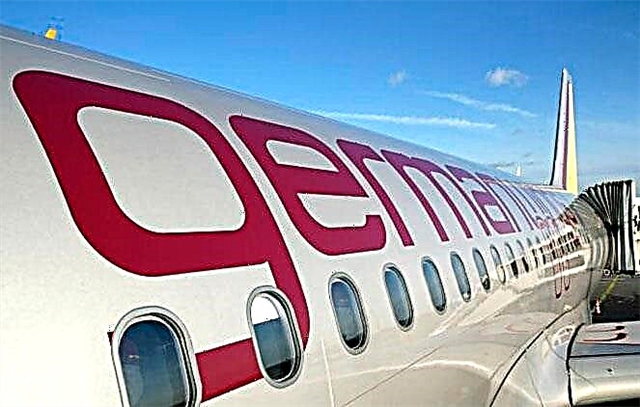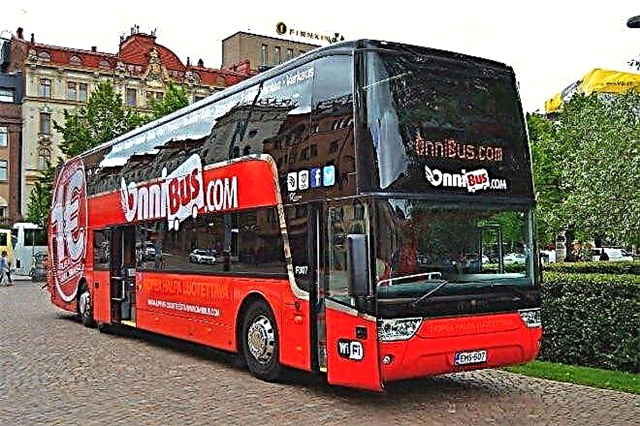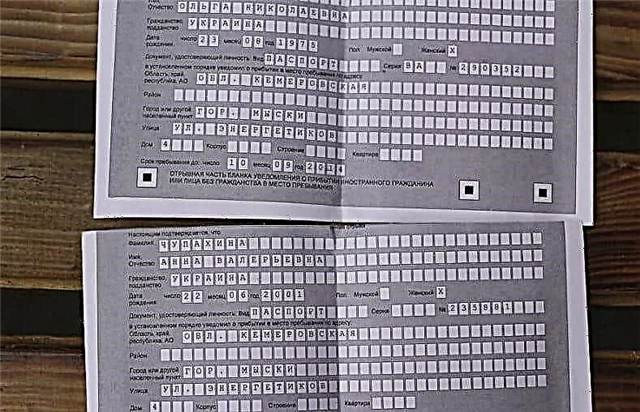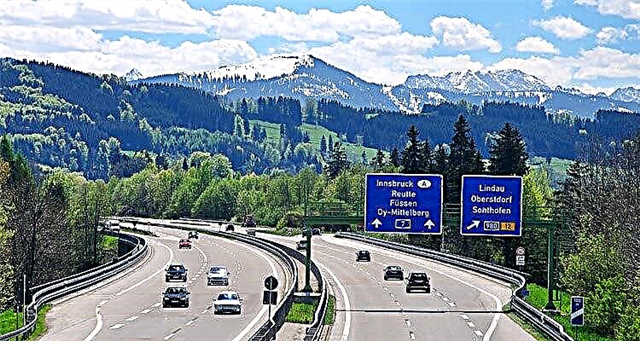Germany is an outstanding country with one of the most advanced economies in the world. German infrastructure is often cited as an example for residents of the CIS and other less developed countries, where bad roads have become commonplace. One of the main German assets can be considered the autobahns and roads of Germany.

The specifics of autobahns and roads
Autobahns in Germany comply with international standards, and when designing them, a number of conditions must be met:
- The presence of two or more lanes for traffic in each direction.
- Strip for dividing opposite flows with partitions. The width of the lane is 3.5–4 meters, and the height of the partitions allows you to see what is happening in the oncoming lane.
- Mandatory separation of traffic flows at all levels.
- The road surface is asphalt on a concrete base.

In addition to meeting technical requirements, highways must have appropriate equipment and infrastructure:
- reflective signs with an installation interval of no more than 50 m;
- recreation areas with parking spaces and toilets;
- gas stations with shops, catering establishments and hotels;
- an automatic traffic monitoring system, which allows you to take into account the traffic congestion and weather conditions, setting on the basis of this the permitted maximum speed;
- contact phone numbers for calling for help are placed every 2 km;
- uniform standards for all road signs and signs;
- fences to reduce noise from road transport and prevent animals from accessing the track.
Germany has the fourth longest expressway network in the world. The total length of the autobahns, according to 2021 data, is more than 13 thousand kilometers. We also recommend that you familiarize yourself with the road maps of Germany.
Autobahn identifiers and numbering

The German autobahns have their own numbering system. The trunk identifier consists of the A prefix and numbers (up to 3 characters). The number of digits indicates the length of the Autobahn. The shortest highways can be recognized by the three-digit numbers. Two-digit numbers represent medium-length roads that usually connect key autobahns - their identifier contains one digit.
For example, the longest autobahn A7 runs through all of Germany and allows travel between Austria and Denmark.
The even numbering indicates that the track allows travel between the western and eastern regions of Germany.
The odd numbers of the autobahns tell the driver that their route runs between the northern and southern parts of the country.
For example, the A17 is the autobahn to Dresden, which allows you to get to Prague. You can also come across identifiers with the E prefix - these are European road routes.
Organization of traffic on the autobahns in Germany
There is a special speed limit on the autobahns in Germany. Highways were originally conceived for fast movement around the country, so in most cases there are no speed limits. However, the recommended speed is 130 km / h. Faster speed significantly increases the likelihood of an accident.
Vehicles with a maximum speed of less than 60 km / h are not allowed on the Autobahn.
About a third of all German autobahns have speed limits. It should be borne in mind that, depending on the traffic intensity and traffic conditions, the permissible minimum and maximum speeds may vary. Similar situations arise in the event of accidents or traffic jams.
Highway traffic rules
Germany has quite strict legislation. Most violations are punishable by points and monetary fines. For deprivation of rights, 8 points are enough.
- The concentration of alcohol in the blood above 0.5 ppm is subject to a fine of 500 to 1500 euros and the accrual of 7 penalty points.
- A dose of 1.1 ppm is a criminal offense and carries a prison sentence with subsequent disqualification.
- Transportation of alcohol in open containers is prohibited.
- The use of low beam is recommended.
- The speed limit on German autobahns is respected with an error of 3 km / h.
- To transport children under 12 years old, a special seat is required.
- With a height of less than 150 cm, the child must ride in the back seat.
- It is mandatory for all passengers to wear seat belts.
- Drivers are prohibited from talking on the phone without using a headset.
- It is recommended to have a spare set of lamps, first aid kit and warning triangle. Also, in the event of an emergency stop, you will need clothing with reflective elements.
- The windshield of the vehicle must transmit at least 75% of the light, and the side front windows - 70%.
- Tires must be suitable for the season and weather conditions.
Tunnels and toll roads
Until 2021, toll roads in Germany for passenger cars were represented by only a few objects. At the moment, travel on the autobahns is paid for by purchasing a vignette - a kind of subscription for a certain period. The fares are as follows:
- 10 days - 10 euros.
- 60 days - 22 euros.
- 1 year - about 130 euros (for German citizens).
In addition to the general tax, entry to the following roads and tunnels in Germany is paid:
- Warnowtunnel tunnel - up to 4 euros (depending on the season);
- Herrentunnel tunnel - 1.7 euros;
- panoramic road Rossfeld panoramastrasse - 8 euros.
Interchanges and traffic, service areas, ramps
 Service zones are spaces that allow you to fulfill all the urgent needs of drivers on the road: accommodation, refueling and buying food. The names of such zones are most often associated with settlements or geographical attractions located nearby.
Service zones are spaces that allow you to fulfill all the urgent needs of drivers on the road: accommodation, refueling and buying food. The names of such zones are most often associated with settlements or geographical attractions located nearby.
Service zones, which contain shops and gas stations on their territory, are called Rastplatz.
Also on the German autobahns there are Autodofs - car villages. On their territory there are repair stations, car washes, motels, restaurants and even a paid shower.
All exits on the German autobahns are numbered and mapped. The ausfahrt road sign indicates the exit from the motorway.
There are also signs indicating the distance to the exit so you don't miss a turn.

Traffic junctions on key and middle highways do not intersect at the same level - only merging or splitting of traffic flows is allowed.
The intersection configuration is indicated on the signs. The use of the cloverleaf interchange is quite typical.
Germany's geographical position creates colossal traffic on its roads. The following methods are used to relieve excessive traffic on motorways:

- automatic speed limit for each lane, depending on the traffic congestion;
- dynamic road signs;
- motion sensors to assess traffic intensity;
- temporary markup;
- using the side of the road as a temporary lane;
- prohibition of overtaking by trucks.
Take a sociological survey!
Autobahn construction in Germany
 In Germany, roads are built using the most advanced technologies that guarantee durability and quality. The average service life of the roadway is 30-50 years, which is much higher than that of most of the CIS highways.
In Germany, roads are built using the most advanced technologies that guarantee durability and quality. The average service life of the roadway is 30-50 years, which is much higher than that of most of the CIS highways.
In addition, the road performance remains high for a long time. All this is fundamentally different from the countries of the post-Soviet space, where roads are repaired almost every year after winter.
First of all, it should be noted that the construction of autobahns has nothing to do with the usual methods of paving asphalt. If you look at the Autobahn's canvas in section, it will resemble a sandwich consisting of several layers:
- prepared base;

- a textile backing that has a drainage function;
- base of sand and gravel;
- cement concrete layer;
- top layer of cement or asphalt.
Work is carried out mainly with the help of technology, and the percentage of manual labor is minimized. The machines lay layers of concrete mix almost automatically.
In the final step, expansion joints are cut and individual slabs are formed to prevent cracking. Seams are sealed with rubber seals.
 In order for the loads to be evenly distributed, the canvas is reinforced with dowels and anchors. These metal structures help to restrict vertical and horizontal movement of concrete slabs.
In order for the loads to be evenly distributed, the canvas is reinforced with dowels and anchors. These metal structures help to restrict vertical and horizontal movement of concrete slabs.
Maintenance of a concrete road excludes local repairs - the entire damaged section is replaced. In one shift (12 hours), workers can, on average, walk 800 m. The cost of 1 km starts from 2 million euros, an asphalt road costs about the same ..
 Asphalting technology in Germany is gradually giving way to concrete. The main advantages of asphalt are the speed of the mixture hardening (concrete takes several days) and the possibility of patching. Among the strengths of cement concrete are environmental friendliness and durability.
Asphalting technology in Germany is gradually giving way to concrete. The main advantages of asphalt are the speed of the mixture hardening (concrete takes several days) and the possibility of patching. Among the strengths of cement concrete are environmental friendliness and durability.
Ecological zones
On the roads of Germany, there are often ecological zones, which are designed to prevent pollution of the atmosphere by dust and emissions. These areas are marked with a sign with the inscription "Umwelt zone".
A Plakette sticker is required to cross the ecological zone. Its cost ranges from 5 to 15 euros. There are 3 types of stickers and may be required in their respective areas.

Foreign citizens can order Plakette at the following websites: www.dekra.de/umweltzone or www.umwelt-plakette.de/de/home.html.
To fill out the application, you will need a registration certificate with information on the environmental characteristics of the vehicle. The cost of paperwork is 6 euros, and stickers are usually sent by mail within a few weeks. The permit can also be obtained at official centers or purchased at some gas stations. The penalty for not having a sticker is 80 euros. The list of ecological zones can be found on the map.
German parking lots
Parking in Germany is mostly paid. On average, an hour of parking will cost 1 euro. There are 2 types of parking payments:
- for a fixed period of time;
- upon the end of the parking lot.
Usually the duration of parking is 2 hours, after which you need to free up space or park again. For payment, special machines are provided that accept coins and do not give out change.
The received parking ticket must be attached to the windshield. The fine for unpaid parking ranges from 5 to 27 euros for 30 minutes of inactivity.
You can read more information about the nuances of behavior on German roads, traffic rules and fines for violations in the article: “What a tourist needs to know about German traffic rules”.
Importance of German highways
All over the world, the German autobahns have rightfully secured the status of reference roads. As a kind of litmus test of the country's development level, the quality of roads in Germany reflects the scrupulousness and responsibility of the Germans. This is why German motorways can be considered as important landmarks as the Brandenburg Gate or the Berlin Wall.












